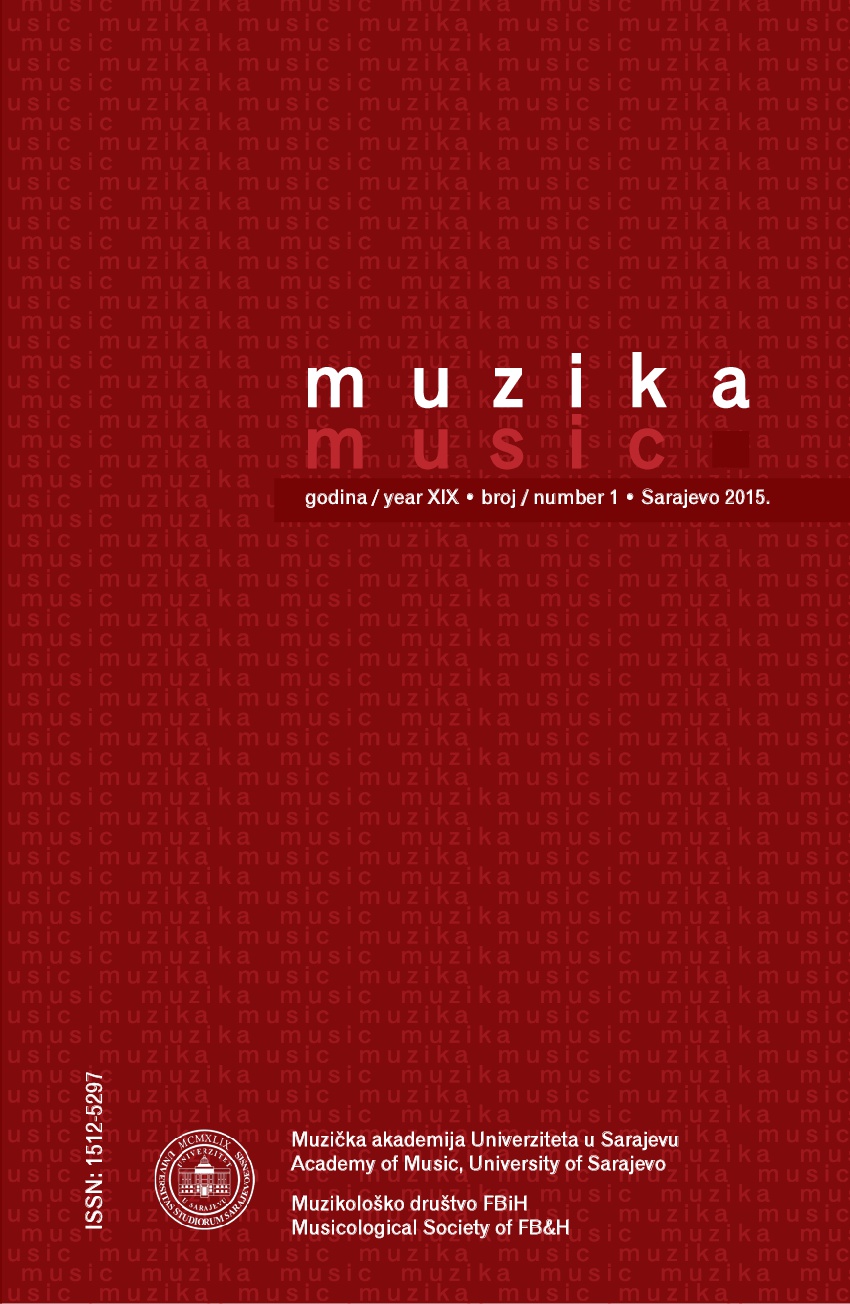Pedagoški principi Maxa Battkea
Pedagogical Principles of Max Battke
Author(s): Ena BrdarSubject(s): Education, Music, Scientific Life
Published by: Univerzitet u Sarajevu - Muzička akademija; Muzikološko društvo FBiH
Summary/Abstract: The development of solfeggio as a basic area of music education can be traced in context of general development of music pedagogy, and in most cases, we can discuss its matter and forms of its treatment rather than a subject under such a name. Unlike many other formative and educational areas in music pedagogy, solfeggio was exposed to a multitude of ideas, examinations, methods, innovations etc. ever since it was invented as a teaching subject in its basic dimensions. As a result of intentions to define and direct this subject, many pedagogical and didactic intentions influenced formations of the basic shape of contemporary solfeggio. In that context, we can mark the work of the German theoretician and pedagogue Max Battke who had a very important role in the development of German contemporary solfeggio. His pedagogical principles were founded under the influence of the Tonic-Do method popular at the time; however, they were not entirely bound to it. Some of these principles are said to be very inventive given the timeframe, and also authentic and characteristic of the author. Battke’s work is very ambitious and encompasses nine textbooks which approach a multitude of problems in solfeggio. Using the textbooks as a means of communication, the author speaks to everyone who participates in the music education: to the student as well as to the pedagogue, whose profile the author aims to perfect. Even though his work was left in the shadows of time, a closer insight into Battke’s work confirms that several principles of his practice would be useful even today, especially those related to analytical solfeggio.
Journal: Časopis za muzičku kulturu Muzika
- Issue Year: XIX/2015
- Issue No: 1
- Page Range: 70-77
- Page Count: 8
- Language: Bosnian, English

